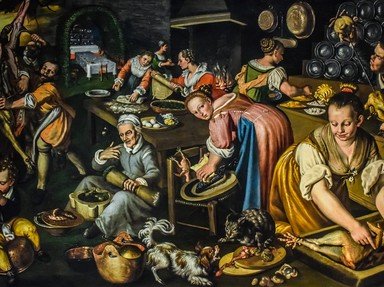Quiz Answer Key and Fun Facts
1. Which "hero in a halfshell" is usually credited with creating "The Madonna of the Pinks" (c. 1506-1507)?
2. Seeing the "The Madonna of the Pinks" on a computer screen is one thing but seeing it in person is another. Where would you visit to see the original painting?
3. In artwork, the term "Madonna" usually refers to Mary, mother of Jesus. In the painting "The Madonna of the Pinks", who is in the picture with Mary?
4. The original name of "The Madonna of the Pinks" in Italian was "La Madonna dei garofani". Which type of flower is referred to in the original title?
5. In terms of size, to which object is "The Madonna of the Pinks" roughly comparable?
6. What type of medium was used to paint "The Madonna of the Pinks"?
7. In the painting "The Madonna of the Pinks", there is an open window looking outside. What is the main feature that can be seen outside?
8. The history of a painting's ownership can be interesting. Which individual held "The Madonna of the Pinks" privately before selling it to the art museum early in the 21st century?
9. In the painting "Madonna of the Pinks", the right ear of Mary can be seen. It is pierced but bears no earring. What does this symbolize?
10. Where do we think the artist was living at the time he created "The Madonna of the Pinks"?
Source: Author
bernie73
This quiz was reviewed by FunTrivia editor
looney_tunes before going online.
Any errors found in FunTrivia content are routinely corrected through our feedback system.
